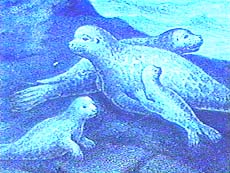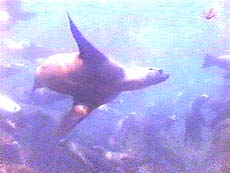


In August 1494, Christopher Columbus anchored off the Island of Alta Vela to the south of Haiti. When his men went ashore they found "sea-wolves" sleeping on the sand, appearing lethargic and possibly unaware of the danger that was associated with man; the sailors easily killed eight of these "sea-wolves" and returned to their ship with fresh food rations for their voyage ahead. This sea-wolf was the first New World animal to be logged in the journals of Christopher Columbus in his historic voyages of discovery, and was possibly the very first mammal to be described by the early navigators.

The Caribbean Monk Seal was one of these now extinct species.
Monk Seals form a distinctive sub-family (Monachinae) of seals which consist of three widely separate species living in sub-tropical waters. Along with the Caribbean Monk Seal are the Mediterranean Monk Seal (Monachus monachus) and the Hawaiian Monk Seal (Monarchus schauinlandis). It is believed that they all descended from a single Mediterranean stock, drifting westward from the Canary Islands and somehow, became transposed across the Isthmus of Panama. All three of these species have been persecuted by man; as with nearly all the fur-bearing sea mammals, the monk seals were hunted on a massive scale through the eighteenth and nineteenth centuries. The result: the Caribbean Monk Seal is extinct, the Hawaiian Monk and Mediterranean Monk Seals are endangered.
